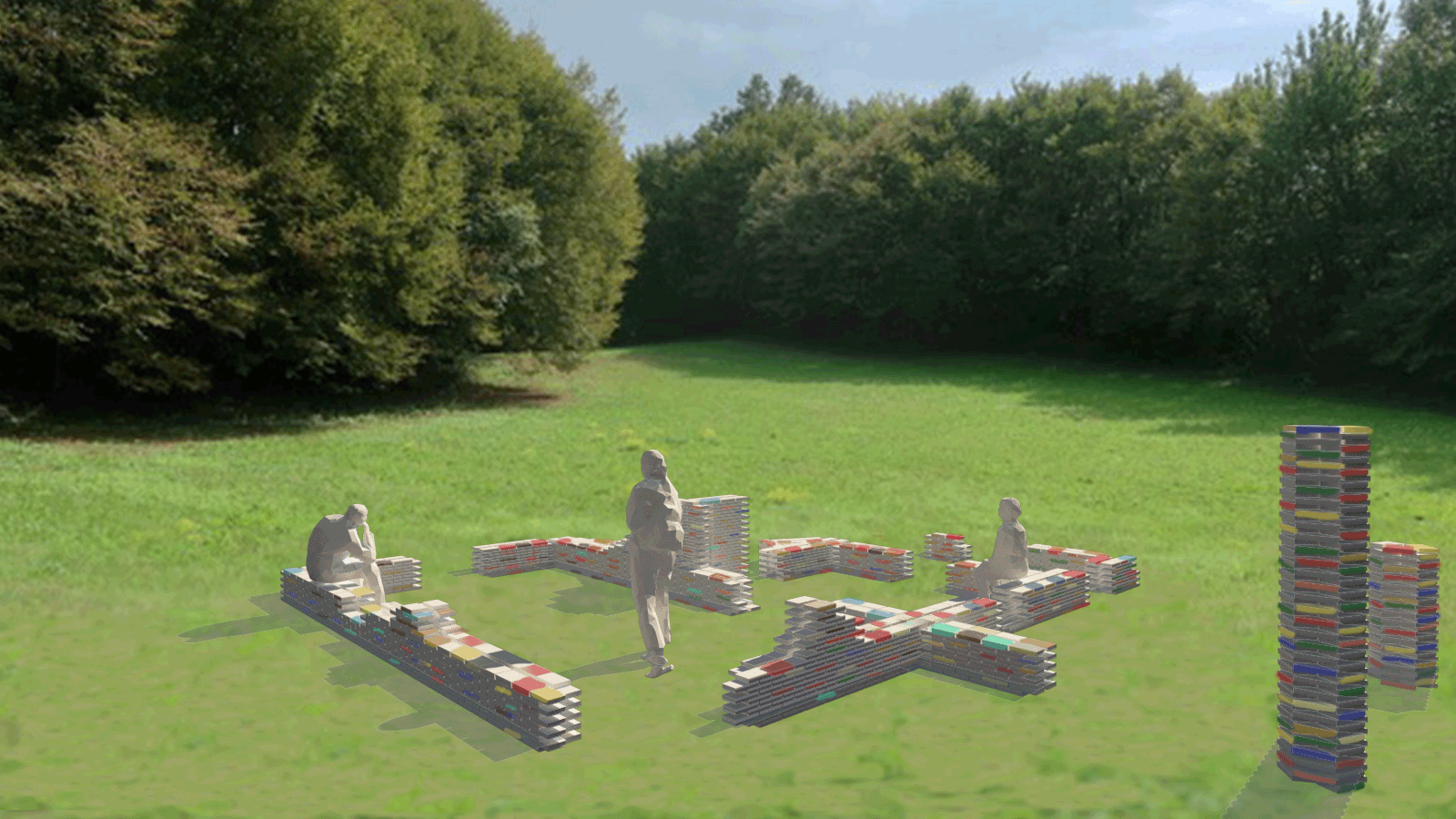Art in the Hills—
Falling Folios @ Colli Berici
Lausanne, January 2021




Ruins as art - connecting with the past
This installation is meant as the substrate of an architecture that decayed over time. The silent remains of a dwelling. The fragments are just high enough (30 to 90 cm) to suggest walls, columns, opening, corridors and rooms. A floor plan is legible and is reminiscent of Roman villas found all over Italy. This floor plan is directly inspired from the Villa Rotonda and is a direct nod to the Palladian villas found around the Berici Hills (Villa Pisani-Benetti or VIlla Pojana). Choosing a domestic architecture is not an innocent choice. A house is a shelter, and more than a geometrically defined space, it is a metaphorical space that stimulates the imagination through the feeling of intimacy and safety. This vestige of a home can be seen as a meditative space to actively engage with the artwork and the surrounding landscape. Visitors are encouraged to meander through the art work, sit on it, draw on its surfaces. If the artwork imprints in the mind of the visitors, so should the mind of the visitors imprint on the artwork.
Books as building blocks
Hugo in the Hunchback of Notre-Dame talks about the death of architecture through the invention of printing. Indeed, books replaced architecture as a source of knowledge transmission.
Today, as we experience a digital revolution, screens, bits, software are replacing books as a source of knowledge dissemination. Books are rendered obsolete, becoming distant artefacts of a close past. They constitute the foundation of our civilizations, and yet their corporeality is in danger. Using them as building blocks to this artwork, turns the construction into an archeology of the digital age. An architecture of stone killed by an architecture of books, killed by an architecture of bits. The cycle of destruction continues.
The book as an object has a materiality and a haptic quality that enables its sentimental appropriation by its own and just like the house, creates an immaterial space, for the reader to hide in. The immaterial space is as ornate, and grand, as is the physical space bear and desolate. The book as a building block offers a stability that constructs beyond the manifest.
Arte Natura
This installation brings the book back into an ecological narrative that we often overlook. The book metaphorically returns right where it comes from, namely from trees and vegetal fibers. This installation however should not be understood as the book’s final resting place, but rather a place of renewal and growth. The books are bound together with soil, nutrients and seeds, to enable plants, insects and moss to grow right through the crack of the art work. The artist participates in restoring the link between the book and the natural environment, grounding the artwork in its overwhelming context, grounding the visitor back into nature.